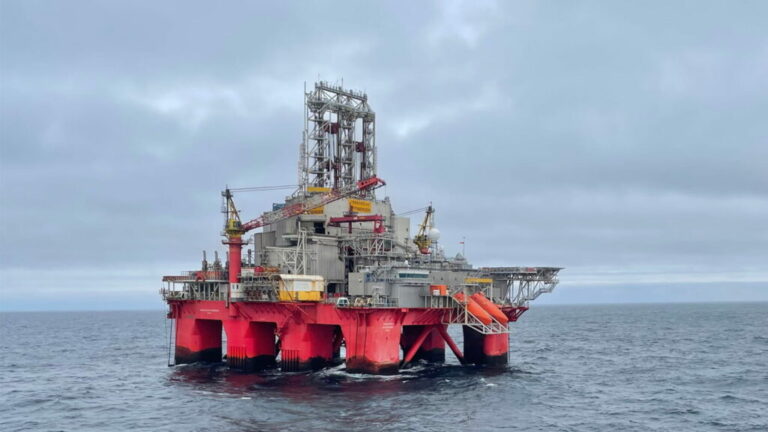A new merger may soon be visible on the rig market horizon, as the Switzerland-based offshore drilling contractor Transocean is now allegedly contemplating a business combination with its Bermuda-headquartered rival Seadrill.

Media speculation is running high following a Bloomberg report, which cites sources with insider knowledge who wished to remain anonymous while disclosing that the two offshore drilling players have engaged in initial talks regarding the possibility of merging their assets to create a bigger player. Such a move would further boost the pricing power offshore drillers enjoy during the ongoing offshore oil and gas boom and put the potential for more revenue generation on the menu.
With new technologies enabling oil and gas operators to dive into deeper water depths and unlock previously untapped hydrocarbons, like the 20,000 psi (20K) technology Chevron and TotalEnergies recently used in the Gulf of Mexico and BP is planning to deploy at its new development in the same region, many, including Noble Corporation, which now has 41 rigs in its fleet, are anticipating higher demand levels for floaters.
As the rig demand is forecast to pick up the pace from late 2025 and 2026, it is expected to spur more seven-generation rig reactivations, tightening the market further in the years to come, given the 120 rig years of open demand across 73 opportunities, with the national oil companies (NOCs) share being 47%, international oil companies (IOCs) part at 39%, and exploration and production (E&P) of 14%.
With Rystad Energy’s research predicting deepwater spending of about $79 billion for 2026-27, an extended upcycle in the offshore drilling market is on the cards, thus, many, like Noble, are convinced that deepwater production growth will play a far more prominent role in the future global energy security.
The recent Noble Corporation-Diamond Offshore merger has ignited the consolidation spark, whetting the appetite for additional moves among the world’s top four floating rig contractors and other offshore drilling players to combine their stocks to ensure longevity and strengthen economies of scale.
Transocean’s market capitalization is $3.59 billion and Seadrill’s is $2.66 billion, thus, the offshore drilling duo’s combined market cap would be $6.25 billion. Both players saw a jump in shares since speculation about their merger started circulating. Offshore Energy has contacted the offshore drilling pair to obtain more information, however, no response has been received at the time this article was published.
Last year in June, Olivier Le Peuch, SLB’s Chief Executive Officer, claimed “a unique oil and gas cycle” was underway, as spotlighted in the offshore sector, which he described as “the fastest growing market globally driven by long-cycle developments, production capacity expansions, the return of exploration and appraisal in brownfields and new frontiers, and the criticality of gas as a long-term fuel for energy security.”
Le Peuch deemed the outlook beyond 2024 as strong, anticipating over $500 billion in global final investment decisions (FIDs) between 2022 and 2025 across more than 30 countries, with over $200 billion attributable to deepwater, representing a 90% hike compared to 2016 through 2019.
SLB’s CEO identified three key drivers of the uptick as being related to the step-up in infill and tie-back activity in mature basins; the scale-up of large oil and gas development projects in Guyana, Brazil, and the Middle East, creating a broad opportunity in the subsea market; and a return of exploration and appraisal in new frontier offshore provinces such as Namibia, Tanzania, Colombia, India, and the East Mediterranean.
Wood Mackenzie recently disclosed expectations of further offshore rig market consolidation, since over 60% of the total floater backlog is now with four drilling contractors after Noble grabbed the first mover advantage with the move to bring Diamond Offshore into its fold.
Other analysts noted that the Noble-Diamond Offshore merger would pressure Transocean, Seadrill, and Valaris to follow suit by pursuing similar arrangements to seize growth opportunities in the dynamic offshore drilling ecosystem. If the circulating merger rumors about Transocean and Seadrill are accurate and the duo manages to strike a business combination deal, this would create a fleet of 49 rigs.
While Transocean owns or has partial ownership interests in and operates a fleet of 34 mobile offshore drilling units (MODUs), consisting of 26 ultra-deepwater floaters and eight harsh environment floaters, Seadrill operates 15 MODUs, encompassing 12 drillships, one niche semi-sub, and two harsh environment units, after exiting the jack-up segment in two transactions disclosed in September 2022 and June 2024.
Since Reuters reported last month that Simon Johnson, Seadrill’s CEO, said the offshore drilling company was interested in buying distressed assets or players with “distressed” balance sheets, other merger plays may also be in the offing. Industry sources indicate that a Valaris-Seadrill business combination may not be too far-fetched either, along with acquisitions of smaller drilling contractors.
However, the Reuters report also quoted Keelan Adamson, Transocean’s President and COO, as saying that the company believed there was room “for one big consolidation, especially given that our customers are also consolidating,” thus, many expect the next merger to be between one of the floating rig giants.
These expectations are supported within the same report by Johnson, who reportedly said Seadrill was open to expanding its fleet with “20-25 units” and becoming “a junior partner” as long as the takeover offer was a good one and reflected its fleet’s quality.
Read More: More rig market consolidation on the cards as Transocean and Seadrill ponder merger
